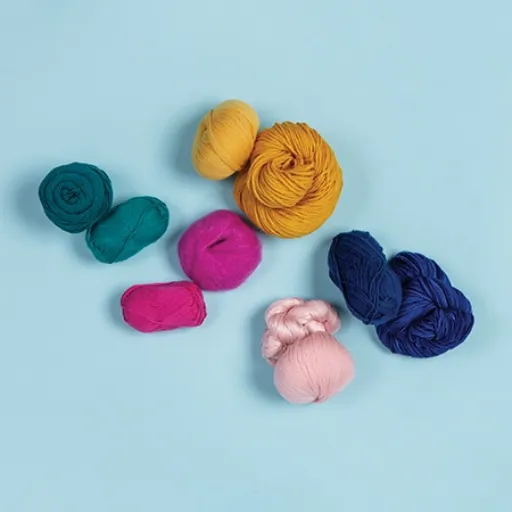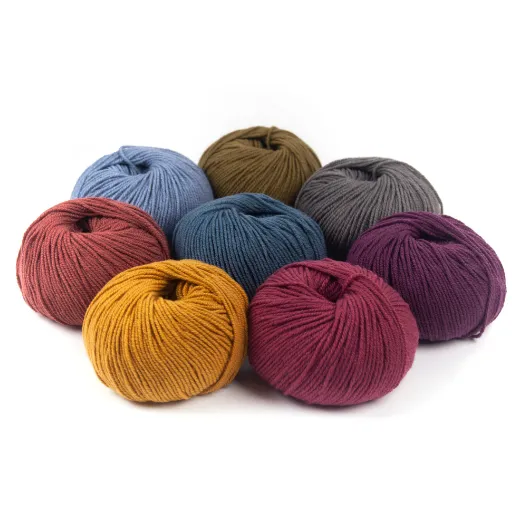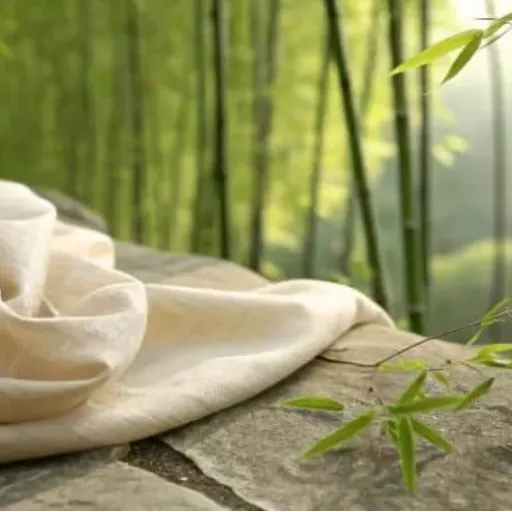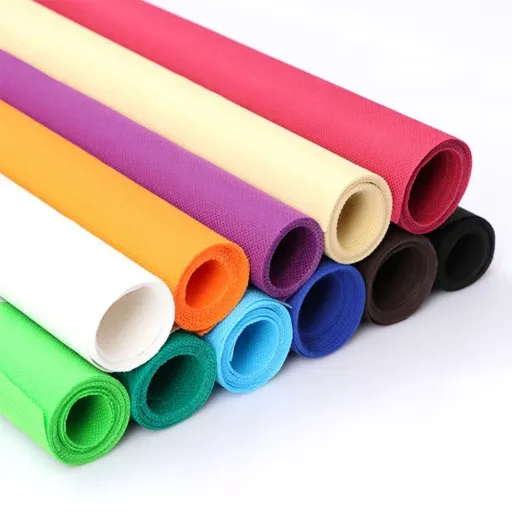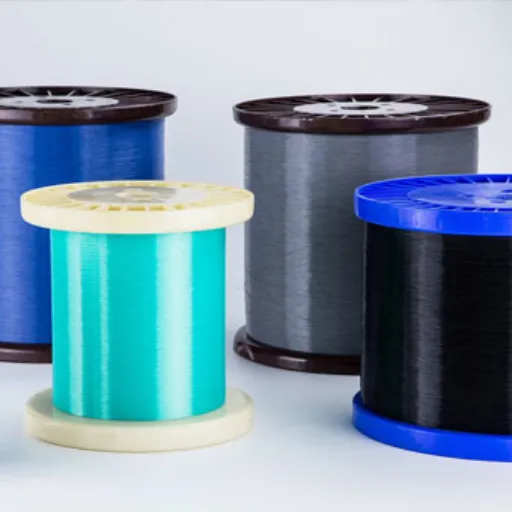Fabric made of viscose is one of the materials most widely used and has become a favorite because of its softness, breathability, and luxury. Also coined as “artificial silk,” it stands halfway between cheap and elegant varieties, something that makes it someone’s choice for whatever domain, whether clothing, home décor, or else. But what is dispersing the mysterious charm of viscose, and what gives this fabric that enchantment? We will discuss the unique characteristics of the viscose fabric, its uses, and tips for how to care for it. Whether you are a fashion buff, home textile lover, or plain inquisitive to learn about fabrics, this article will tell you all about viscose and ways to benefit from it.
Introduction to Viscose
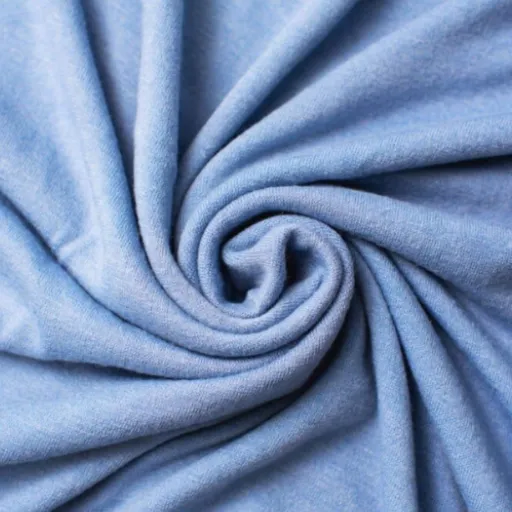
What is Viscose Fabric?
Viscose is a kind of semi-synthetic fabric, made from cellulose mostly extracted from wood pulp. The cellulose undergoes some chemical treatment, which produces a soft fiber that feels much like natural fibers such as cotton or silk. The process thus produces a material that can be used in a fairly versatile range of applications, striking a compromise between the durability of synthetic fibers and the comfort of natural ones.
Key Properties of Viscose:
- Lightweight and breathable
- Holds bright colors well
- Excellent draping qualities
- Soft touch and smooth texture
On one side of her key properties stands the fact that viscose is lightweight and breathable, designating it well for apparel items such as dresses, blouses, and activewear. The ability to hold bright colors while graciously draping is also what ensured its acceptance in home textiles: curtains and upholstery are typical examples. Also from the viewpoint of skin feel, exhibiting a soft touch is what makes Viscose a great choice for everyday wear and luxury applications alike.
However, viscose requires careful maintenance to preserve its quality over a more extended period. The other property that it has is absorbency with moisture wicking, but the fabric becomes weak when wet. Thus, caution during washing and drying is paramount. Usually, handwashing is recommended, and if a machine wash is preferred, it is better to set that on gentle. In having an insight into this fabric, one can better benefit from that special blend of style, comfort, and practicality.
Origins and History of Viscose
The profound history of viscose is a very fascinating journey. The alternative for the very name of viscose is that it is a rayon. Originally developed towards the end of the 1800s as a cheap and versatile alternative to silk, viscose dates back to the year 1884 when British chemists Charles Frederick Cross, Edward John Bevan, and Clayton Beadle discovered that the cellulose derived from wood pulp could be processed to produce a material extruded into fibers. This discovery led to the commercialization of viscose fiber by the year 1905; thus the fiber was among the very earliest man made threads.
Historical Timeline:
- 1884 – Discovery by British chemists
- 1905 – Commercial production begins
- Mid-20th century – Widespread popularity achieved
The term “viscose” is derived from the viscous solution which is formed in the cellulose processing technique. This name is meant to convey the uniqueness of the process in which wood pulp or cotton linters are dissolved into chemicals that end up being a thick liquid later spun out into thread or fabric. This was the material that could be mass-produced in large quantities and was indeed soft, breathable, and inexpensive, thus becoming a fast favourite among textiles.
By the mid-20th century, viscose was very popular because of its adaptiveness and economical price. It served purposes from the very mundane, like clothing and upholstery, to the industrial, such as tire cords. Of course, the environmental concerns surrounding its chemical processing offered an incentive for improvements in manufacturing techniques over time. In an increasingly crowded market, viscose still holds a firm place in the textile industry on account of its peculiar combination of comfort and utility.
Popularity in Fashion and Home Textiles
Its popularity in fashion and home textiles arises from its wide array of uses and the desirable properties associated with it. Intersidiously being able to resemble cotton, silk, and wool discourages designers from looking at it as a cheaper, pricier alternative. The breathable, somewhat soft, and smooth surface brings comfort to clothes; in this respect, it customarily goes into making dresses, shirts, and lingerie. The material also dyes very well; hence, garments in this fabric are in fashion.
Viscose finds its way into home textile applications such as curtains, cushion and upholstery covers. This ability to drape affords the fabric a luxurious appeal, capable of enriching interior designs, from minimalism to extravagance. In contrast, home decorating in its smooth finish imparts a degree of elegance. Such affordability further helps in marketing it to the broader spectrum of consumers. So much so that blending viscose with other fibers for enhanced durability has become fairly common among textile manufacturers for modern-day households.
The constant desire for viscose in these domains accurately depicts the compromise it makes between comfort, practicality, and price. The environmental impacts, however, pose a continuous concern, giving rise to alternative, more environmentally friendly methods of production. In spite of all these, viscose is dominant in textile apparel and decoration-units for its ability to perfectly blend utility and aesthetic appeal.
The Manufacturing Process of Viscose
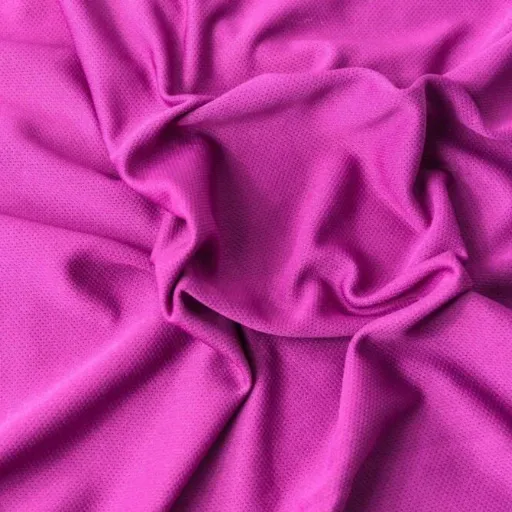
Raw Materials Used in Viscose Production
In the initial phase, viscose manufacturing needs cellulose, which is a natural polymer, mostly obtained from wood pulp. Various trees, primarily of the high cellulose group species such as eucalyptus, beech, and pine, are the sources of this wood pulp. Cellulose is valued for its renewability and abundance and thus serves as the heart of viscose manufacture.
| Tree Species | Cellulose Content | Common Use |
|---|---|---|
| Eucalyptus | High | Premium viscose production |
| Beech | High | Modal and viscose fibers |
| Pine | Moderate-High | Standard viscose production |
Chemical processes turn cellulose into viscose. In the first step, sodium hydroxide is used to treat the alkali cellulose wood pulp. After this step, the cellulose needs to react with carbon disulfide, which converts it into cellulose xanthate. This stage is essential to prepare the viscose dissolution: cellulose xanthate dissolves in sodium hydroxide with the resultant viscous liquid that gives viscose its name.
At the raw material stage, sustainability in the cellulose sourcing remains an issue. Cellulose in itself is renewable, but the environmental impacts come into play if the wood pulp is not procured from a source of managed forest. If it were to go by certification standards such as those issued by the Forest Stewardship Council (FSC), the raw material is considered produced in a sustainable manner, thereby preventing deforestation and damage to ecosystems.
Extraction of Cellulose from Wood Pulp
For the extraction of cellulose from wood pulp, the wood is split into its primary structural materials to isolate cellulose fibers. The whole process starts with logging and chipping of the wood and then moving to the chemical treatment process of pulping. The pulping in itself retains the lignin and other non-cellulose materials to prepare raw cellulose. Hardwoods may also undergo a manufacturing process called thermomechanical pulping, where water is sprayed onto wood chips, and steam is applied to soften lignin. In contrast, for chemical pulping, chemicals like sodium hydroxide may be used to remove the non-cellulose components.
Sustainable Extraction Practices:
- Sourcing from FSC-certified forests
- Optimal chemical usage
- Waste byproduct recycling
- Green technology development
After pulping, the cellulose may undergo further purification steps to guarantee its quality and suitability for particular end uses. It is washed thoroughly so as to remove all traces of chemicals and dried into sheets or fibers. The dry product may then need further processing: for instance, bleaching to achieve the required amount of purity and brightness, all depending on the end application. It is essential to weigh the shi-fu process against the environment since some of the methods are heavy on environmental costs.
In industries, practices are being adopted to make extraction as sustainably viable as possible. This involves sourcing certified wood, using chemicals optimally, and recycling any waste byproduct that may occur. Wood from managed forests certified by organizations such as the Forest Stewardship Council (FSC) assures lesser deforestation. In addition to this, various developments in green technologies would eventually minimize emissions and waste so as to make the extraction of cellulose even more environment-friendly.
Chemical Treatments and Processing Steps
Chemical treatment and processing steps are the actual isolation processes for cellulose from raw material while considering efficacy and quality issues. Usually, the process starts with pre-treatment steps whereby raw wood materials are chipped in preparation for pulping. During this stage, Wood fibers are reduced in size by physical means so that they become amenable to further chemical treatments.
Processing Steps Overview:
- Pre-treatment: Wood chipping and size reduction
- Pulping: Chemical or mechanical separation
- Bleaching: Purification and brightness enhancement
- Chemical Recovery: Environmental optimization
Then follows the pulping operation, where cellulose fibers are separated from lignin and other various wood-associated entities. This distinction is usually afforded by employing one of the two major types of pulping: mechanical or chemical. Chemical pulping, of which the kraft and sulfite methods are prime examples, encompasses chemicals to chemically alter lignin and hemicellulose to an extent where the cellulose may be recovered in a usable form. One of the essential factors for such treatments is control over time, temperature, pressure, and concentrations of reactants such that with proper optimization, much less wastes are created with the fullest utilization of cellulose of desired quality.
After pulping, the bleaching operation is equally important to provide brightness and purity to the cellulose, especially in the preparation of paper. It may involve the use of oxygen, chlorine-free materials, or other environmentally friendly substances that decompose into harmless end products, purging the residue lignin. The latest trends in green chemistry goal at making these methods more environmentally friendly by using unseen chemicals but still retain their efficacy.
Characteristics and Benefits of Viscose
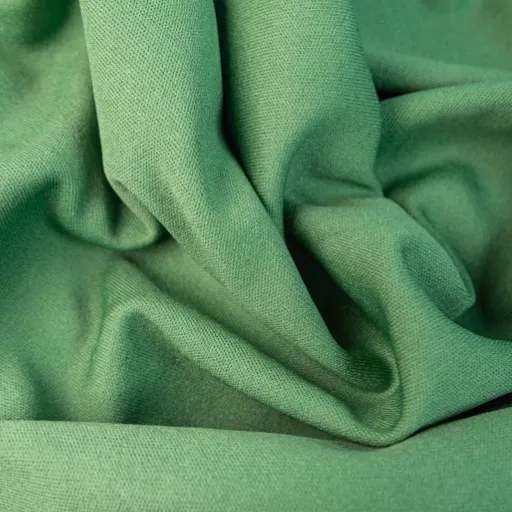
Softness and Breathability
Viscose is highly esteemed for its considerable softness, providing a texture that leans toward that of natural fibers like cotton or silk. Fiber does lend itself well to textiles and garments as it feels gentle to the hand and smooth to the skin. Conversely, being a lightweight fiber, it allows for the comfortable wearing of viscose, especially under warm climates conditions.
Breathable and cool is another feature of viscose. The fabric sustains lateral airflow as a draw to cool and dry the whole body. This makes viscose clothes some of the best-selling summer clothes for comfort or better air circulation in humid regions. It is the heat resistance of the garment that makes such comfort possible in real-life scenarios.
Between its softness and the airiness offered by viscose, the fabric truly upgrades itself into the category of versatile and practical. It asks to be comfortable and functional, whether draped in fashion, upholstery, or bedding. Great considerations as a sustainable option for individuals who respect design as well as comfort in their fabric selections.
Versatile Applications in Textiles
Widely recognized for its flexibility, viscose can be attributed to diverse textile applications. The soft finish and breathability make it the mattress for Naira Day wear comfortable clothing. Flowing dresses and lightweight shirts equipped with an elegant drape that seems to be very lightweight and airy give designers and wearers alike pleasure.
Fashion Applications
- Dresses and blouses
- Lightweight shirts
- Lingerie
- Summer wear
Home Textiles
- Curtains and drapes
- Upholstery covers
- Bedding materials
- Cushion covers
Industrial Uses
- Cleaning cloths
- Medical gauzes
- Wipes
- Industrial filters
Home textile applications also demonstrate the versatility of viscose. Being adorned with a smooth finish, it is utilized for upholstery, curtains, and bedding. The finish, along with smooth texture, transforms the stature of interiors into a functional and comfortable class-an enticing factor for contemporary and classic decor.
In addition to specialty applications in the textile industry, it finds its place in industrial and medical products. With such properties as high absorbency and softness, viscose can be used to manufacture cleaning cloths, wipes, and medical gauzes. It is this diversity of application that makes it so functional and versatile in being trusted in multiple markets.
Comparison to Other Fabrics like Silk
Yet another one of those closely-compared fabric pairs for the conflicting reasons of elegance and softness is viscose and silk. Originating from wood pulp, viscose is a semi-synthetic fiber created to emulate many of silk’s valuable characteristics at a much lower price. Providing a much-needed smooth and soft hand for draping purposes, it is one of the fabrics chosen by somebody who wishes to buy something luxurious yet cheap.
| Aspect | Viscose | Silk |
|---|---|---|
| Origin | Wood pulp (semi-synthetic) | Silk moth caterpillar (natural) |
| Cost | Lower | Higher |
| Durability | Moderate | High |
| Care Requirements | Delicate | Very Delicate |
| Shine | Moderate | Natural Lustrous |
Silk is a natural protein fiber: an animal fiber produced by the silk moth caterpillar. It is cherished for its gorgeous shine and beauty and for added strength and breathability. Yet it costs the most, must lite-care-made, so that it might be cool for wear. In contrast, viscose though less sturdy, and less expensive to maintain, would be the favorite whenever it is for everyday wear or lashing large-scale production.
Ultimately, the choice between viscose and silk would take into consideration the consumer’s specific application. In comparison, silk would be a much more expensive option- an option worthy of consideration when looking for affluence and durability for a special occasion. On the other hand, viscose is the most economical option, with a similar look, feel, and limitless applications.
Care Guide for Viscose Material
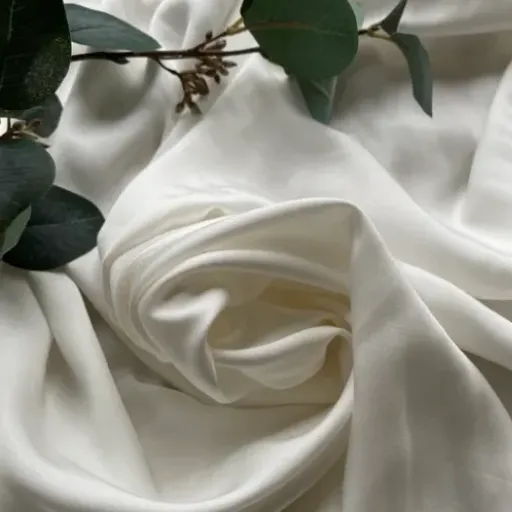
Washing Tips for Viscose
Viscose is a delicate fabric, so its washing needs to be appropriate to maintain quality and to ensure longevity. Viscose clothing is ideally hand-washed in cold or lukewarm water using a mild detergent. The fabric is gently stirred or swished in the water, without wringing or twisting it, because that can damage the fibers.
⚠️ Important Washing Guidelines
- Water Temperature: Cold or lukewarm only
- Detergent: Mild, gentle formulas
- Handling: No wringing or twisting
- Machine Setting: Gentle cycle with laundry bag
- Avoid: Bleach and harsh chemicals
Machine washing may be employed with a gentle cycle set for cold, and always placing the garment in a laundry bag to reduce friction and stretching. Choose a detergent meant for delicate fabric; never bleach; never harass with harsh chemicals because these will weaken the viscose fibers. Whenever possible, follow instructions on the garment label because some viscose items might need special washing instructions.
Avoid wringing out water after washing the garment. Instead, lay the garment flat on a clean towel, roll it up gently to absorb moisture, reshape it again, and lay it flat for air drying. Do not put clothes in the dryer as high heat may lead to shrinkage or harm the fabric. Both the washing and drying techniques featured above may assist you in keeping the softness, outward appearance, and longevity of your viscose garment.
Drying and Ironing Instructions
Drying should always be by air. To prevent damage to your precious garment, always lay it flat on a clean dry towel with gentle reshaping done to fit the original form. Avoid hanging your garment, as this could stretch the fibers or lead to other distortions. It is also not recommended to place your garment into a tumble dryer, where temperatures can run high and cause shrinkage or other damages to the material.
✅ Proper Drying Methods
- Lay flat on clean towel
- Reshape gently to original form
- Air dry in ventilated area
- Avoid direct sunlight
❌ Avoid These Methods
- Hanging wet garments
- Tumble drying
- High heat exposure
- Wringing or twisting
The ironing requires a low heat setting, with the garment preferably turned inside out. To provide protection while ironing, place a thin cloth or towel over the fabric. Your iron should never be set to a temperature that is so hot it can leave marks or scorch the fabric. Excessive steam too should be avoided, with whichever little steam is applied being as minimal as possible.
Following these cautionary procedures will keep your garment looking nice, retain its texture, and general durability. Drying and ironing with care will make sure your clothes maintain the original quality and last for a longer period so that they can give you more value and enjoyment in the days to come.
Maintaining Quality and Longevity
Viscose is a semi-synthetic fiber made of regenerated cellulose, chief among the sources of which is wood pulp. The manufacturing process involves treating the cellulose with chemicals such as sodium hydroxide and carbon disulfide to create a viscous solution that is then spun into fibers. Being of plant origin, viscose is consequently frequently regarded as an alternative to natural fibers like cotton, wool, or silk.
This material is admired for its smooth feel, lightness, and great draping qualities, which make it popular for all sorts of clothing and fabrics. Breathable and moisture-absorbent, viscose fabric is comfortable during summer times. Yet, it is not as much durable as some other fibers and requires a delicate hand to keep it looking good.
As much as waterflowed viscose has been considered full of advantages, its production has posed some environmental concerns arising from the usage of noxious chemicals and massive water consumption. Therefore, innovations in sustainable practices are under consideration so that the impact on the environment can be lessened, while still laying emphasis on the good qualities of this versatile material.
Sustainability and Environmental Impact
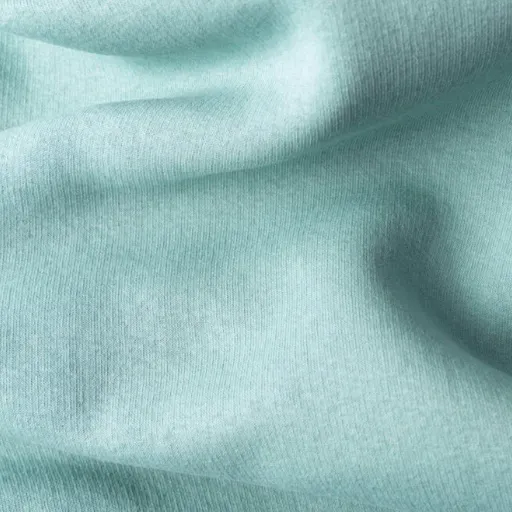
Viscose is Biodegradable and Its Production Process
Viscose material is mainly made of cellulose taken from natural sources like wood pulp. The trees chosen are usually those containing high amounts of cellulose, like beech, pine, spruce, or eucalyptus. Cellulose is derived from the selected tree through numerous chemical treatments to break it down into a usable purified form.
🌱 Environmental Benefits
Biodegradable
Natural decomposition
Renewable Source
Wood pulp from trees
Sustainable Potential
FSC certification available
The production process includes treating the wood pulp with some chemicals, particularly sodium hydroxide. This turns it into alkali cellulose. This alkali cellulose, after it is aged, is treated with carbon disulfide to form viscose and then dissolved for making honey-like liquid. The viscose solution is discharged through spinnerets to make fibers; threads are solidified in a chemical bath immersion.
While viscose is biodegradable and derived from renewable resources, its production does have certain environmental drawbacks. The chemicals can be harmful if care is not taken in their disposal, and extensive amounts of water are typically consumed in the process. With an eye toward solving these challenges, the industry has lately been slowly embracing sustainable methods to limit chemical waste and conserve resources.
Concerns about Deforestation and Chemical Use
Forests that are cut down present great threats to viscose production mainly because the raw material, the wood pulp, is usually sourced from the forests. Unsustainable logging results in habitat destruction, loss in biodiversity, carbon emission increase, etc. Hence, some manufacturers now are attacked at buying wood only from sources that are certified as being sustainably harvested-genuinely managed forests-with very few exceptions-nowadays. This would have the effect of drastically lowering their impact on natural ecosystems while promoting the integrity of the environment through time.
⚠️ Environmental Concerns
| Deforestation Issues | Habitat destruction, biodiversity loss, carbon emissions |
| Chemical Concerns | Carbon disulfide, sodium hydroxide disposal issues |
| Water Usage | High water consumption in processing |
The chemicals involved in viscose production also pose environmental and health risks, with substances used such as carbon disulfide and sodium hydroxide for the conversion of wood pulp into fibres. Improper disposal of chemical wastes contaminates air, water, and contaminates workers. Fortunately, various newer technologies and closed-loop production systems minimize chemical leaks and effectively capture byproducts; such innovations pave the way toward safer production and environmental safety.
To summarize, the solution to deforestation and use of chemicals in viscose production calls for a united effort by manufacturers, legislators, and consumers. The demand for sustainably produced fibers fosters better supply chain practices. Fairer regulations and certifications would promote accountability and stewardship for the environment that can, in turn, pave the path toward an accountable textile industry. Once stakeholders make conscious choices, they can help ensure that the production of viscose is environmentally sustainable as well as socially responsible.
Innovations in Sustainable Viscose Alternatives
In a nutshell, viscose material is prepared from cellulose that comes from a variety of natural plant sources, such as wood pulp derived from trees like beech, pine, and eucalyptus. In the production stage, the cellulose is treated with the chemicals through which the material is made into a water-soluble compound. The compound is then regenerated into fibers that can be spun into threads or fabrics giving that soft and silky smooth feel to viscose.
Being natural, the key ingredient of viscose is the cellulose extracted from plants. But the traditional manufacturing process uses quite a few harmful chemical agents, such as sodium hydroxide and carbon disulfide. These agents chemically transform the raw cellulose into a thick solution (hence the name “Viscose”) before fibers can be spun. However, the use of such substances has raised environmental and health concerns in association with air pollution and water pollution during the production process.
🔬 Sustainable Innovation Areas
- Closed-loop systems: Chemical recovery and reuse
- Alternative production methods: Reduced toxic chemical usage
- Sustainable sourcing: FSC-certified forest materials
- Green chemistry: Environmentally friendly processing
- Water conservation: Reduced consumption technologies
The advances focus on sustainable viscose alternatives that reduce impact all around the environment associated with viscose production. Some innovations include employing closed-loop systems to recover and reuse chemicals; alternative routes to producing viscose that utilize fewer toxic chemicals; and sourcing cellulose from certified sustainable forestry. The very idea behind these efforts is to come up with a more responsible and eco-friendly method of producing viscose while not compromising on the quality of the material.
Frequently Asked Questions (FAQ)
Q: What is viscose material made of?
A: The main constituent of viscose material is regenerated cellulose, which comes from natural sources such as wood pulp. This cellulose goes through a viscose process that eventually yields a kind of rayon known as viscose rayon.
Q: How does the viscose process work?
A: The viscose process starts from dissolving cellulose in a chemical solution; this solution is then extruded through spinnerets to form fibers. From there, they are solidified in a coagulation bath, generating the end product, a soft fabric with an incredible amount of versatility known as viscose.
Q: What are the properties of viscose fabric?
A: Viscose is soft to touch, breathable, and drapes excellently. It is mainly used for clothing and fabric in the fashion world, giving a luxurious look of silk.
Q: Is viscose a natural or synthetic fabric?
A: It is classified “semi-synthetic” because it is made from natural cellulose and then processed by chemical means. This makes it different from entirely synthetic fabrics like polyester.
Q: What is the difference between viscose and modal?
A: Both are types of rayon, with modal being made out of beech tree cellulose and having the reputation of being strong and moisture-wicking. Viscose, technically, is usually made from wood pulp and hence has a set of characteristics different from modal.
Q: Can viscose replace cotton?
A: Yes, viscose can well substitute for cotton, given that it is soft and versatile. Since it is used in garments that require fabrics that freely flow and are lightweight, it is very much in demand in the fashion industry.
Q: What is the first commercial viscose rayon?
A: The first commercial viscose rayon was an invention of the late 19th century, with the intention of creating silk-like fabric. This breakthrough helped popularize the use of rayon fabrics for several applications.
Q: How does bamboo viscose differ from regular viscose?
A: Bamboo viscose is derived from bamboo cellulose, which is often considered to be more sustainable than its traditional wood pulp counterparts. Both undergo the same processes; however, bamboo viscose is advertised as an environmentally-friendly alternative in the textile industry.
Q: What are the benefits of using viscose fabric?
A: As for extravagance in viscose, it can absorb moisture, and breathability is respected in it. From being a beauty in draping arts and fine garments are diverse, dresses, and blouses constitute just one aspect of which increased appeal viscose has found in the fashion industry.
References
-
What is Viscose Fabric? Exploring How It’s Made, Impact – Dalston Mill Fabrics – Explains that viscose is made from wood pulp, typically from trees like pine, beech, and eucalyptus.
-
What Is Viscose: Understanding Your Fabrics – Contrado – Describes viscose as a cellulosic fiber made from wood pulp, similar to cotton or linen.
-
What is Viscose Fabric: Properties, How it’s Made and Where – Sewport – Details that viscose, also known as rayon, is a semi-synthetic fabric derived from wood pulp.
-
7 things you need to know about viscose fibers – ISPO – Highlights that viscose is a semi-synthetic raw material made from cellulose, a natural component found in wood.
-
Viscose Fabric Guide: Types, Properties, Application – Tissura – Provides insights into viscose fabric as a material based on artificially obtained cellulose fibers.









